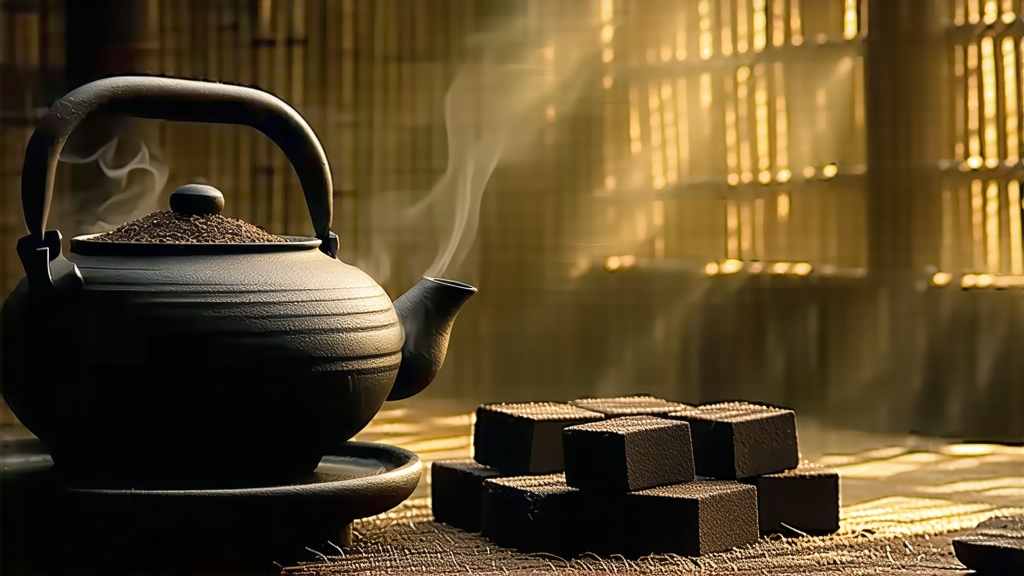
Tucked away in the southern folds of China’s Guangxi Zhuang Autonomous Region, the small town of Liubao has given the world a tea that most drinkers have never heard of—yet one that once financed empires. Liu Bao (literally “Six Forts”) is the name of the tea, the town, and the river wharves where, three centuries ago, compressed baskets of jet-black leaves were hoisted onto bamboo rafts and floated down the Liu River to Guangzhou, then on to Hong Kong, Singapore, and the kitchens of Malay sultans. Today the same tea is quietly re-emerging from the shadows of Pu-erh, offering a softer, sweeter face of China’s dark-tea family.
Historical footprints
The earliest written record appears in the 1797 edition of the Cangwu County Gazetteer: “Tea from Liubao, dark as lacquer, relieves dampness and fever; merchants barter it for ginseng.” By the mid-Qing dynasty the Qing court had placed Liu Bao on the list of “border-tea tributes,” trading it with Mongolian tribes for war horses. When the British opened Hong Kong as a free port, Cantonese coolies carried Liu Bao to Southeast Asia, where tin-mine laborers drank it to fend off malaria and oily diets. In 1886 the Straits Settlements import logs list 2,300 tonnes of “Lau-Pak,” making it more numerous than Keemun or Wuyi rock tea. The 20th century brought war, revolution, and a shift to green-tea exports; Liu Bao retreated into provincial obscurity until 2004, when a resurgence of dark-tea interest in China sent collectors rummaging through the musty warehouses of Wuzhou city.
Terroir and leaf
Guangxi’s climate is a steam bath: 78 % average humidity, 1,600 mm of rain a year, and red lateritic soil rich in iron oxide. The indigenous cultivar is the Da Ye Zhong (large-leaf species) of Camellia sinensis var. sinensis, but unlike Yunnan’s broad-leaf assamica, the Guangxi leaf is thinner, more pliable, and higher in amino acids, giving Liu Bao its trademark sweetness. The picking window is narrow: only the first four leaves after the Qingming festival, when the spring mist lifts just enough to reveal the tips. Farmers call this “dragon-scale pluck,” because the youngest leaf still curls like a miniature dragon scale.
Crafting darkness: the wet-pile secret
Liu Bao belongs to the “hou fajiao” (post-fermentation) category, yet its microbial choreography is distinct from Pu-erh’s. After pan-firing and rolling, the leaves are heaped 70 cm deep in bamboo-lined pits dug into the earth floors of 300-year-old tea factories. The piles are sprayed with mineral-rich water drawn from the Liujiang River, then covered with jute sacks and left to breathe. For the next 25–35 days the tea master “reads” the pile like a vintner reads must: temperature probes, smell of wet betel nut, a quick squeeze to judge the give of the leaf. When the internal core hits 58 °C the pile is turned; when it drops to 42 °C it is restacked. This cyclical baking and re-wetting cultivates a unique microbial consortia dominated by Aspergillus niger, Blastobotrys adeninivorans, and a rare yeast Candida parapsilopsis that produces γ-decalactone—the same compound that gives peaches their creamy note. Finally the tea is steamed, pressed into 40 kg bamboo baskets lined with wild taro leaves, and transferred to humid caves under the town’s karst hills. There it will slumber for a minimum of three years, often twenty, while oxygen seeps slowly through the woven bamboo, oxidizing catechins into theaflavins and thearubigins, turning the leaf from russet to obsidian.
Basket nomenclature
Liu Bao is sold by basket weight and vintage. A “San He” basket carries three brands’ chop marks and is considered the Bordeaux blend of Liu Bao; a “Solo Lao” is single-farm, single-year, the Burgundy equivalent. The most sought-after lots are the 1970s “Zhong Cha” baskets commissioned by the China National Native